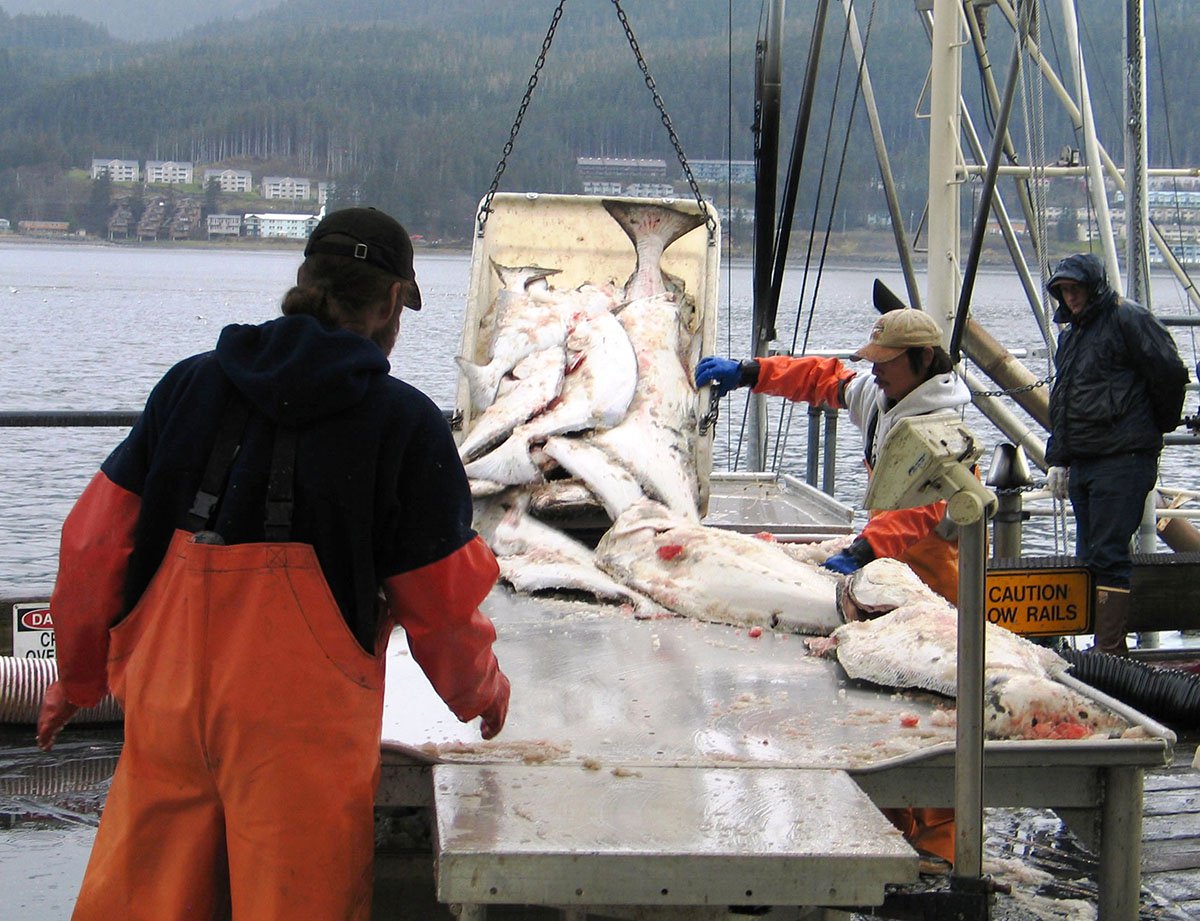A “resounding success” is how scientists summed up this summer’s Pacific halibut survey, despite it being shortened and scaled down a bit because of covid constraints.
The so-called fishery-independent setline survey uses standardized methods to track population trends in the Pacific halibut stock, which ranges from the U.S. West Coast to British Columbia and the far reaches of the Bering Sea.
For two months this summer, 11 longline vessels (down from the usual 17) took halibut survey experts aboard to fish at 898 stations, down 30 percent from the planned 1,283. The foregone areas were waters off California, Oregon and Washington. Survey areas in the Bering Sea near the Pribilofs also were cut, along with stations at the Aleutian Islands near Unalaska and Adak.
“We also thinned out a little bit in the Western Gulf of Alaska, and we also removed the stations off Vancouver Island,” said David Wilson, executive director of the International Pacific Halibut Commission, which oversees the stock for the U.S. and Canada.
Still, Wilson said roughly 70 percent of the Pacific halibut biomass was sampled overall, and 100 percent in the core areas of the central Gulf, Southeast Alaska and northern British Columbia.
“Normally we would have done a thinner sampling in those areas but to ensure that we had enough samples coming out we went for 100 percent in those areas,” he explained, calling it the “most data-rich setline-survey in the commission's 97-year history.”
The halibut that are caught during the survey are sold to cover the cost of the operation. Wilson said the poundage and prices will be revealed next month at the IPHC interim meeting.
“The key thing is that we were able to meet both our scientific requirements and also maintain our economic goal of revenue neutrality,” he said.
The Nov. 18-19 meetings, which will be held online, also will provide a first glimpse at how the halibut stocks are holding up.
“The interim meeting is usually an information sharing meeting for stakeholders where we present the preliminary stock assessments and the outcomes of other research activity. We also put out some of the regulatory proposals we will be considering at the annual meeting,” Wilson said.
Halibut catch limits and other regulations will be revealed in late January.







